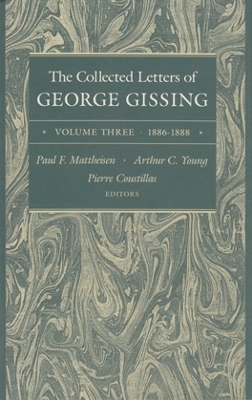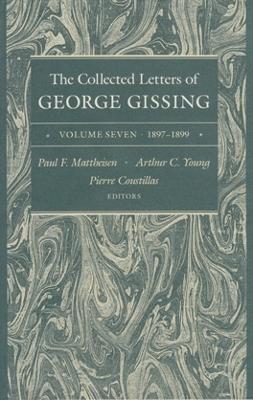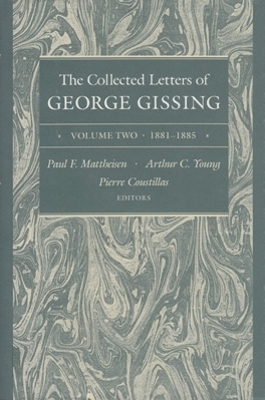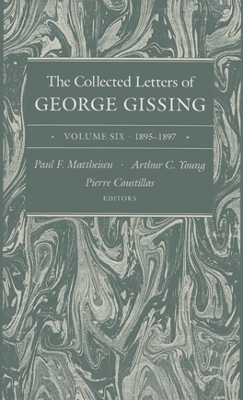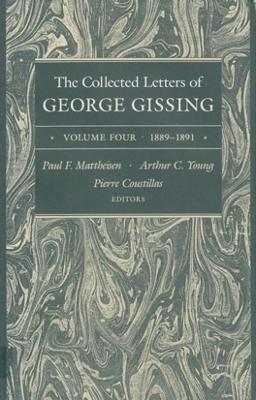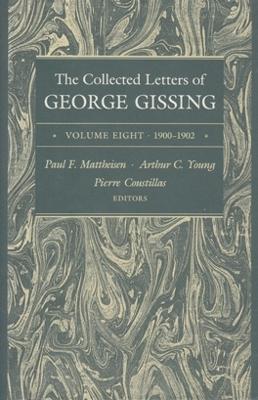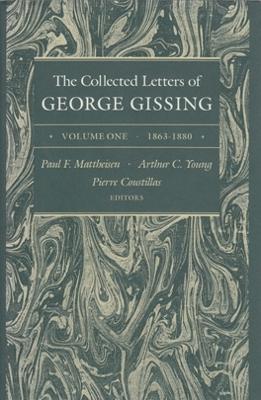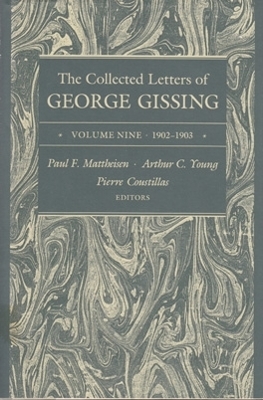Collected Letters Gissing
8 total works
A significant feature of this edition is that it also contains, whenever they are available, letters to Gissing which are of great help in recording his life during the times when his own letters have been lost or destroyed. With the recent publication of Gissing's diary, his commonplace book, and other smaller pieces, this edition becomes the final major publication of Gissing papers known to exist, and certainly the most significant record of his life, his mind, and his art. It will be of crucial importance to any future biographers, and of the greatest value to those who want to study Gissing's novels in relation to his life.
Still emotionally vulnerable from his wretched marriage, he met the most genuine love of his life, Gabrielle Fleury, a French woman familiar with his writings. Through his passionate letters to her, he ecstatically welcomed her into his life, and in a private ceremony of union in France he "married" her in May, 1899 (though illegally-he was still married to his second wife who was in England.) Gabrielle's love supported Gissing the rest of his life, until his early death in 1903. Earlier defeats that he felt were his doom were temporarily overcome at this time by his intimacy with Gabrielle. And he continued to write as actively as he could, producing at this time The Crown of Life, a celebration of his rediscovery of the power of love.
A significant feature of this edition is that it also contains, whenever they are available, letters to Gissing which are of great help in recording his life during the times when his own letters have been lost or destroyed. With the recent publication of Gissing's diary, his commonplace book, and other smaller pieces, this edition becomes the final major publication of Gissing papers known to exist, and certainly the most significant record of his life, his mind, and his art. It will be of crucial importance to any future biographers, and of the greatest value to those who want to study Gissing's novels in relation to his life.
He revised The Unclassed, wrote many short stories, and towards the end of 1897 in Italy he completed a life of Dickens. During these years Gissing was much sought after by editors and by his fellow literati. He solidified friendships with George Meredith and Thomas Hardy, and he formed a new friendship with H. G. Wells. But the letters of this period most poignantly depict Gissing's domestic problems and turmoil which eventually led him to break with his second wife, Edith. As the editors write, in the present volume, \u201cwhich begins at a spiritually low point and steadily verges lower until near the very end, one fancies one can see the beginnings of a permanent frame of mind which was to last or to recur to the end of Gissing's life: a feeling of ineluctable and undeserved defeat...\u201d
But by 1891, his mood is altogether different. His relationships with his family continue to be conflicted and he is increasingly disenchanted with his publishers and his half-hearted marriage to Edith Underwood.
A significant feature of this edition is that it also contains, whenever they are available, letters to Gissing which are of great help in recording his life during the times when his own letters have been lost or destroyed. One might expect the years covered by this volume, 1900-1902, would have been among Gissing's happiest. During the greater share of this time he was with his beloved Gabrielle Fleury, sometimes living in great comfort in France, and he enjoyed some periods of good health. But gloom and depression seemed to be his companions wherever he went. And Gabrielle had to tend daily to her sickly mother, who was a formidable presence in Gissing's life. Gissing makes it clear that he is aware that happiness will elude him. Typical comments in his letters include: "The whole of this present life is spent in gaining experience which it is always too late to use." And further, during the Boer War, "I wish I had died ten years ago. I should have gone away with some hope for civilization, of which I now have none." He was to write later that one "puts into literary form hopes which are not very likely to be realized."
And yet he was able to work and was able to see Our Friend the Charlatan along with By the Ionian Sea published during these years.
A significant feature of this edition is that it also contains, whenever they are available, letters to Gissing which are of great help in recording his life during the times when his own letters have been lost or destroyed. With the recent publication of Gissing's diary, his commonplace book, and other smaller pieces, this edition becomes the final major publication of Gissing papers known to exist, and certainly the most significant record of his life, his mind, and his art. It will be of crucial importance to any future biographers, and of the greatest value to those who want to study Gissing's novels in relation to his life.
Even more than in previous volumes, the illustrations here help one to visualize the world Gissing left in December of 1903. Included in an appendix are a number of letters to and from Gissing which were discovered too late for publication in the previous volumes, where they belonged chronologically. Several other important features also distinguish this final volume from the others. A number of letters and telegrams exchanged between Gabrielle Fleury and Gissing's friends importantly reflect the dramatic circumstances under which he died in the Maison Elgue, where H. G. Wells's presence proved to be more calamitous than useful. Then, the fifty or so messages of condolence that were preserved, sent by sympathizers known and unknown from half a dozen countries, while emphasizing the loss to the family and to literature itself, throw retrospective light on the high esteem in which Gissing was held in the cultural world.
Finally, Gabrielle Fleury's informal but extraordinary recollections provide a definitive description of Gissing's death and illuminate many dark corners in the four and a half years they spent together from the spring of 1899 until his death, adding much to our knowledge of their daily activities at Ciboure and Ispoure and of Gissing's personality as well as of his opinions on matters literary and unliterary. The usefulness of the whole set will be improved by the cumulative indices and lists of recipients, correspondents, miscellaneous letters, and illustrations. In the view of the editors and the publisher, these nine volumes of Gissing correspondence will enhance considerably the image of Gissing's life, public and private, and accelerate the current revaluation of his achievements as a novelist and short story writer, a Dickens critic and classicist. And they open another window on the vanished but ever more fascinating world of a century ago.
